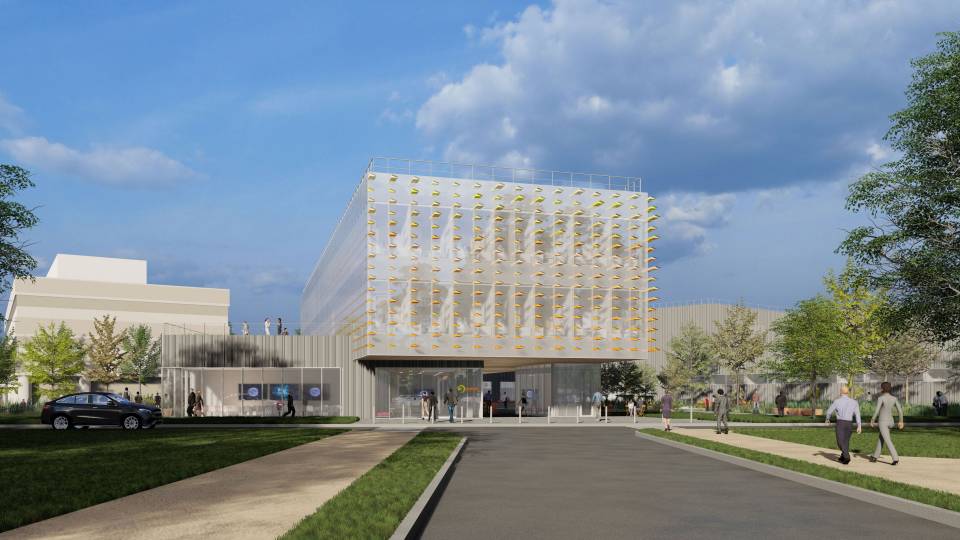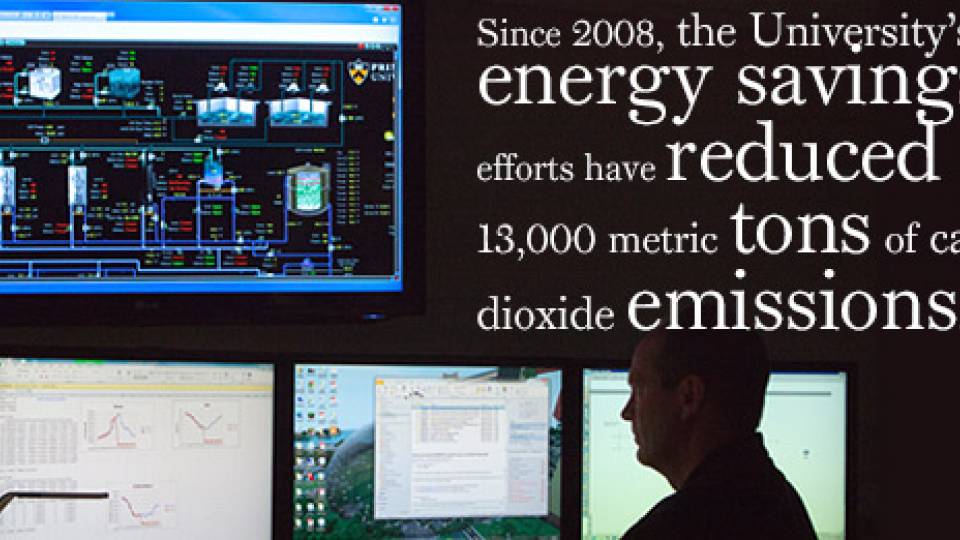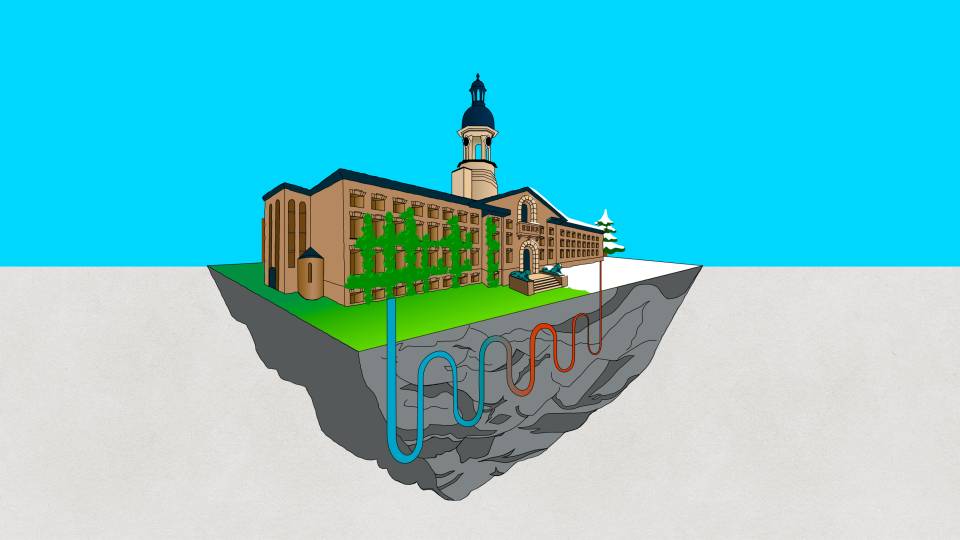The Lyman Spitzer Building, the main administration building at the U.S. Department of Energy's Princeton Plasma Physics Laboratory (PPPL), has been certified LEED gold, one of the highest environmental distinctions for buildings.
"We are delighted to receive this designation for the Lyman Spitzer Building -- or LSB -- from the U.S. Green Building Council," said Adam Cohen, PPPL's deputy director for operations. "We spent nearly three years transforming the LSB, which serves as our main office building, into a 'greener' and more energy-efficient structure."
LEED, which stands for Leadership in Energy and Environmental Design, is the most widely recognized, high-performance green building certification program in the nation.
The LSB, constructed in 1981, achieved gold -- the second highest level of certification -- under the LEED Existing Buildings: Operations and Maintenance standard. The success makes the building the third within the U.S. Department of Energy to achieve gold certification and the largest to do so. The LSB is named after PPPL's founder, Lyman Spitzer Jr., a leading theoretical astrophysicist who was a pioneer in magnetic fusion energy research and conceived a large-scale observatory that became the Hubble Space Telescope.
Improvements and existing "best practices" culminated in making the LSB more environmentally friendly and ultimately led to the LEED designation, said Keith Rule, environmental projects head at PPPL. LEED for existing buildings addresses cleaning and maintenance issues -- including chemical use -- recycling programs, exterior maintenance programs and systems upgrades, according to the U.S. Green Building Council.
Rule, who led the LEED project, said many improvements to the heating, ventilating and air-conditioning systems for the past decade, as well as to lighting and building automation systems, have resulted in better energy efficiency performance for the LSB.
These improvements included the installation of LED exterior lighting to pathways and entrances, low-flow and sensor water fixtures, and enhanced ventilation systems and controls. LED lighting refers to light-emitting diode lighting that is more energy efficient. Best practices in place include the 100 percent bio-based cleaning program, 100 percent green office renovations, LED lighting improvements, sustainable landscaping practices and overall building efficiency measures. Best practices are processes and techniques that improve an organization's performance and, in this case, refer to methods to heighten energy efficiency.
The age of the LSB increased the challenge. "It is definitely more difficult to get LEED certification for an older building," Rule said. "Our main concern was energy efficiency."
The LSB is among more than 40,000 projects currently participating in the commercial and institutional LEED rating systems, involving more than 7.9 billion square feet of construction space in all 50 states and 117 countries.
According to the U.S. Green Building Council, buildings in the United States are responsible for 39 percent of carbon dioxide emissions, 40 percent of energy consumption, 13 percent of water consumption and 15 percent of GDP per year, making green building a source of significant economic and environmental opportunity. The U.S. Green Building Council asserts that greater building efficiency can meet 85 percent of future U.S. demand for energy, and a national commitment to green building has the potential to generate 2.5 million American jobs.
"Building operations are nearly 40 percent of the solution to the global climate change challenge," said Rick Fedrizzi, president, CEO and founding chair of the U.S. Green Building Council. "While climate change is a global problem, innovative companies and institutions like PPPL are addressing it through local solutions."
PPPL's Rule said the gold award is a testament to not only the LEED team at the laboratory, but also to every PPPL employee who supports green building practices and "being green." "When people carpool, recycle, save water and electricity, or buy a green product, they are contributing toward a green building and a green laboratory," he said.
The laboratory, located in Plainsboro, N.J., is funded by the U.S. Department of Energy's Office of Science and managed by Princeton University. Laboratory researchers collaborate with others across the globe to develop fusion as an energy source for the world, and conduct research along the broad frontier of plasma science and technology. PPPL also nurtures the national research enterprise in these fields, and educates the next generation of plasma and fusion scientists. Fusion is the process that powers the sun and other stars. In the interior of stars, matter is converted into energy by the fusion, or joining, of the nuclei of light atoms to form heavier elements.
The U.S. Green Building Council is a nonprofit membership organization whose vision is a sustainable built environment within a generation. Its membership includes corporations, builders, universities, government agencies and other nonprofit organizations.


